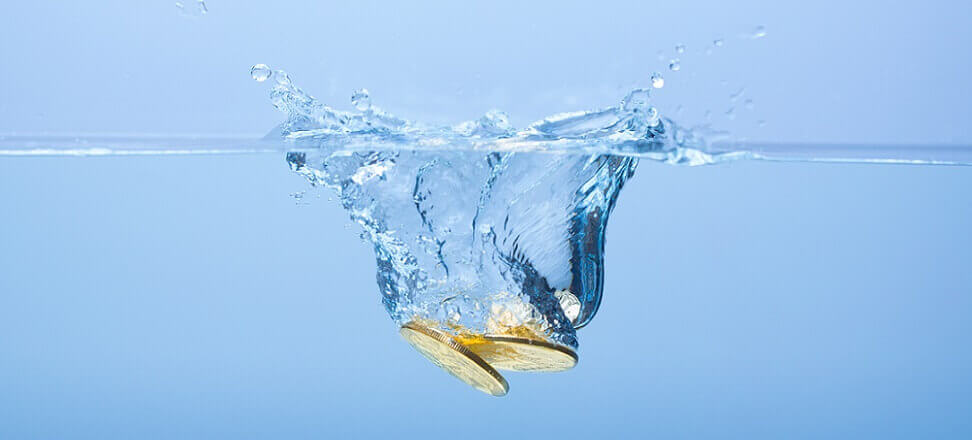No one needs to be convinced anymore that water should be retained. We all see the effects of the droughts that have hit Europe in recent years. How to retain water is still a topic of extensive discussion, whether it is scientific or as part of the authorities’ dialogue with the public. Indeed, different forms of action have their advantages and disadvantages. What makes reservoir retention different from natural retention is also the cost.
Environmental economics
The economic aspects of water storage can be considered in various ways. For example, by checking the financial viability of the venture. This involves determining the amount of money spent directly on the construction of water facilities or the purchase of land and comparing it with the measurable benefits of the investment, such as income from energy production, sluicing fees, etc. The analysis carried out in this way shows, in a nutshell, whether from an economic perspective the investment is profitable.
For ventures that are to provide services not directly measurable in money, cost-benefit analysis is also applicable. It differs from financial analysis in that the positive and negative effects of the investment on the environment and society are also taken into account. These may include improvements in biodiversity or scenic qualities, a decrease in tourist accessibility, and a change in microclimate. What these types of costs and benefits have in common is the difficulty of estimating them. This is because our environment provides us with a certain type of service, which we call ecosystem services. Their valuation methods are handled by a field of science called environmental economics. It gives us a tool to compare the cost of buying land for restoration with the benefits associated with increasing the biodiversity of a site.
For retention, financial analysis alone provides limited information. Therefore, cost-benefit analyses are prepared for various planning documents in which retention measures are considered.
Costs of activities
The planning document setting the directions for the development of retention in Poland is, among other things. Water Shortage Prevention Program (PPNW). In addition to proposals for water storage measures, it includes cost estimates for most of them. According to calculations, it would cost at least 40 billion zlotys to implement the entire NIP. As you can see, retention costs money.
The scale of planned activities in the NPP varies. It includes investment in artificial retention in more than 700 projects, but also the establishment of mid-field ponds. The dimensions of these initiatives vary significantly, as do the volumes of water retreated.
The effects of the different types of activities include, on the one hand, the retention of more than 1 billioncubic meters of water through river restoration or artificial retention, and on the other hand, the accumulation of up to 0.9 million cubic meters from land reclamation initiatives. Here are some examples:
- Investment tasks related to artificial retention – approx. 1176.3 million m3;
- Wetland restoration – approx. 79 million m3;
- River restoration – approx. 1149.2 million m3;
- Construction of small retention reservoirs in forests – approx. 2.8 million m3;
- Restoration of forest stands – more than 450 million m3;
- Implementation and restoration of small retention and micro-retention facilities in agricultural areas – approx. 1082 million m3;
- Promotion and implementation of agrotechnical measures to increase soil retention – approx. 601 million m3;
- Construction of new and reconstruction of existing drainage systems – approx. 0.9 million m3;
- Reclamation of post-mining pits for use as retention reservoirs – approx. 871 million m3.
So it is difficult to compare them with each other. With help comes the economy mentioned earlier. It allows us to collate the effectiveness of activities. For retention, the most appropriate measure is the cost of obtaining 1m3 of stored water.
How much does a m3 of retention cost?
Based on the cost-benefit analysis conducted for PPNW, it can be concluded that 1 m3 of retention will cost an average of about PLN 7.5. Compared to the averaged price of water in Poland, which is about PLN 12, you can see that retention is cheaper than supplying people with water. It should be emphasized, however, that costs vary widely within individual measures, ranging from more than 21,000. PLN to PLN 0.06 per retention of 1 m3 of water. The differences are due to the capital intensity of some activities. This is because it is more expensive to build large hydro facilities than to dismantle them.
The cheapest way is to retreat the water as part of river restoration. This is the aforementioned 6 gr. The process itself, in addition to the benefit of water storage, also involves:
- an increase in channel and soil retention, due to the slowing of water runoff (due to an increase in the roughness of watercourse channels);
- Improving landscape values;
- positive effects on tourism;
- taking advantage of the natural self-purification properties of water, which can result in improved water quality.
And the costs relate to the possible removal of water facilities to restore the natural character of the watercourses.
In comparison, the average cost of storing 1 m3 of water under artificial retention is PLN 25.71. It is associated with higher capital expenditures. It should also be emphasized that the prices of construction materials, such as steel and concrete, necessary m. in. for the construction of reservoirs, have increased greatly in recent years.
The cost-effectiveness of individual investments varies widely. The chart below shows that some, at a relatively low cost, provide high retention, while others cost millions of zlotys, but the result of their performance is not commensurate with the price.

Interestingly, wetland restoration is somewhat cheaper than creating artificial retention. The cost of retaining 1 m3 of water in it was estimated at PLN 16.30. In addition, the reproduction of this form also brings a number of other benefits, such as:
- An increase in the potential for socio-economic development, especially in tourist areas and areas with high natural values – due to the growing importance of ecotourism and nature tourism;
- Restoration of the retention and natural potential of ecosystems;
- Launching regenerative processes of natural structures;
- An increase in the area of hydrogenic habitats;
- Increased water retention (more effective than reservoir retention);
- Reducing greenhouse gas emissions from drained peatlands.
The most expensive is retention through the reconstruction of drainage so that instead of draining, they perform an irrigation function. High costs are associated with large infrastructure reconstruction expenses, but also with the poor condition of equipment. Building new ones is already much more efficient.
Does this mean that we should only renature rivers?
This is what the results of the economic analysis would suggest, but the matter is not so simple. First, one type of retention (e.g., trough retention) will not solve all water shortage problems in different areas. River retention is no substitute for retaining water in fields and will not solve urban rainwater problems. Second, neglecting one type of action, can cancel out the positive effects of others. Failure to rebuild drainage basins will interfere with the effects of, among other things. Wetland restoration or measures to improve soil retention.
Greater cost-effectiveness for some of the activities, therefore, means that we should lean toward them more readily and start implementing them on a large scale. The benefits of restoration certainly go beyond retention, but we must not, however, neglect other ways to stop water runoff.

 Polski
Polski






